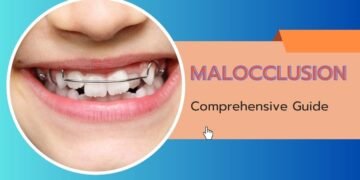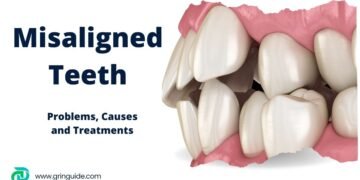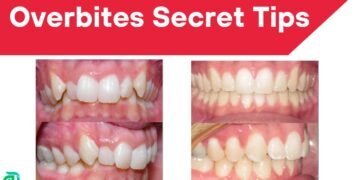Table of Contents
Introduction to Orthodontic Braces
Orthodontic braces are dental devices specifically designed to correct teeth alignment and bite issues. They play a crucial role in both dental health and aesthetics, offering a solution to various orthodontic problems such as overcrowded teeth, gaps, and misaligned bites. The primary purpose of braces is to apply continuous pressure over a period of time to gradually move teeth in a specific direction, ultimately achieving a more aligned and functional set of teeth.
The process begins with an orthodontist evaluating the patient’s dental structure through various diagnostic tools, including X-rays, photographs, and dental impressions. Once the issues are identified, a customized treatment plan is developed. Braces consist of several components, including brackets, wires, and bands. The brackets are attached to the teeth, and a wire is threaded through them, which is periodically adjusted to guide the teeth into their desired positions. The bands help secure the brackets and wires in place.
There are several types of braces available today, each catering to different needs and preferences. Traditional metal braces are the most common and have been used for decades. They are known for their durability and effectiveness. On the other hand, clear braces, also known as ceramic braces or invisible braces, offer a more aesthetically pleasing option. These braces are made of clear or tooth-colored materials, making them less noticeable than metal braces. Additionally, there are other alternatives such as lingual braces, which are placed behind the teeth, and clear aligners, which are removable and virtually invisible.
Understanding the different types of braces is essential for making an informed decision about orthodontic treatment. In the following sections, we will delve deeper into the specifics of ceramic braces and metal braces, comparing their features, benefits, and drawbacks to help you choose the best option for your dental needs.
Metal Braces: Features and Benefits
Traditional metal braces have long been a cornerstone in orthodontic treatment. Comprising primarily of brackets, wires, and elastics, these components work in unison to correct dental misalignments efficiently. The brackets are typically made from high-grade stainless steel and are affixed to the front of the teeth. These brackets are connected by a thin, metal wire that applies continuous pressure to move the teeth into their desired positions. Elastics, or rubber bands, may also be used to aid in correcting bite issues, adding another layer of versatility to metal braces.
One of the standout features of metal braces is their durability. The robust materials used ensure that they can withstand the daily wear and tear that comes with eating and speaking. This durability makes them particularly effective in treating a wide range of orthodontic problems, from minor misalignments to more complex cases such as severe crowding or bite irregularities. Furthermore, metal braces often yield quicker results compared to other orthodontic treatments, making them a popular choice for individuals seeking efficient outcomes.
Cost-effectiveness is another significant advantage of metal braces. Generally, they are less expensive than clear braces or other orthodontic alternatives, making them accessible to a broader demographic. However, this affordability does come with some trade-offs. One of the primary drawbacks is their visibility; metal braces are quite noticeable, which can be a concern for those who are self-conscious about their appearance. Additionally, the metallic components can cause discomfort, particularly when they are first installed or adjusted during follow-up appointments.
Despite these cons, the effectiveness and reliability of metal braces make them a viable option for many individuals. Their ability to address a wide array of dental issues efficiently and affordably ensures that they remain a staple in orthodontic treatment plans. Whether dealing with complex dental problems or seeking a cost-effective solution, metal braces continue to offer a dependable and proven method for achieving a straighter smile.
Clear Braces: An In-depth Look
ceramic braces, commonly referred to as ceramic braces, offer a less conspicuous alternative to traditional metal braces. These braces utilize transparent or tooth-colored brackets that blend seamlessly with the natural color of your teeth, making them an aesthetically appealing option for those seeking a more discreet orthodontic treatment.
The primary materials used in invisible braces include ceramic or porcelain for the brackets, and metal or clear elastics for the wires. The ceramic brackets are specifically designed to resist discoloration and staining, although the ligatures (the small elastic bands that hold the wire to the brackets) can stain, especially from foods or drinks with strong pigments like coffee, tea, or curry.
One of the most significant advantages of ceramic braces is their aesthetic appeal. They are much less noticeable than metal braces, which can boost confidence and make the treatment process more comfortable for individuals concerned about their appearance. This is particularly beneficial for adults and teens who may feel self-conscious about wearing braces.
Effectiveness in treating dental issues is another crucial factor. invisible braces are generally as effective as metal braces in correcting a wide range of dental problems, including misaligned teeth, overbites, underbites, and gaps between teeth. However, they may not be suitable for more severe orthodontic cases, where traditional metal braces might be recommended due to their strength and durability.
Despite their advantages, invisible braces come with certain drawbacks. They are typically more expensive than metal braces, which can be a significant consideration for many patients. Additionally, while the ceramic brackets themselves are resistant to staining, the ligatures are prone to discoloration and may require more frequent changes to maintain their aesthetic appeal. ceramic braces are also slightly more fragile and can be more prone to breaking or chipping than their metal counterparts.
In conclusion, ceramic braces offer a less noticeable and effective option for many orthodontic patients. However, potential users must weigh the pros and cons, including the higher cost and maintenance needs, to decide if invisible braces are the right choice for their dental treatment.
Clear Braces vs Metal Braces: A Side-by-Side Comparison
When it comes to orthodontic treatments, both ceramic braces and metal braces offer distinct advantages and considerations. Understanding these differences can help individuals make informed decisions about their dental care.
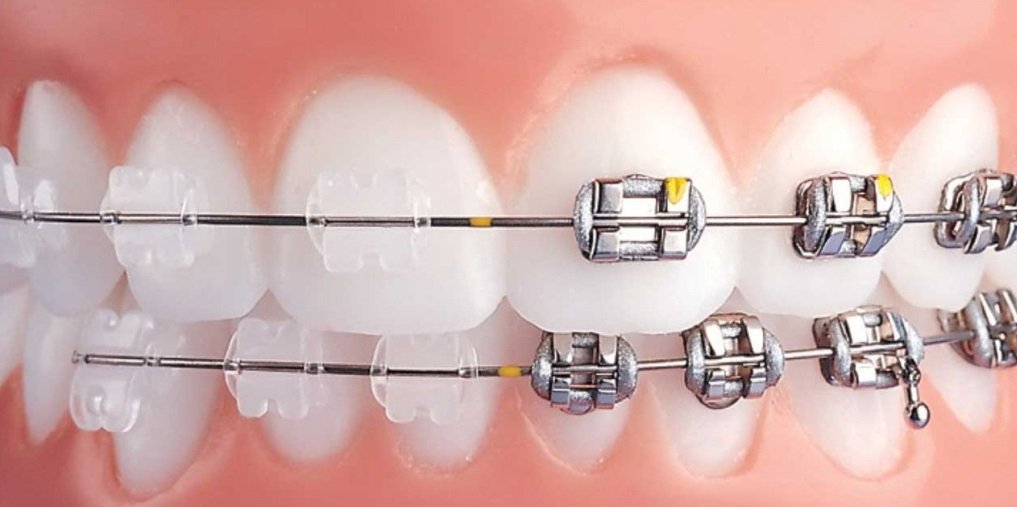
1. Visibility
Visibility is a primary concern for many people undergoing orthodontic treatment. Metal braces are easily noticeable due to their metallic appearance. In contrast, clear braces, also known as invisible braces, are made from transparent or tooth-colored materials, making them significantly less visible. This aesthetic advantage makes ceramic braces a popular choice among adults and teenagers who are conscious about their appearance.
2. Comfort
Comfort is another critical factor. Metal braces can sometimes cause irritation to the gums and the inside of the cheeks due to their metal brackets and wires. ceramic braces, while also having brackets and wires, tend to be smoother and less abrasive. However, both types of braces may cause some discomfort, particularly after adjustments. It’s advisable to discuss these aspects with an orthodontist to determine which option might be more comfortable for you.
3. Durability
Durability is essential for the effectiveness of orthodontic treatments. Metal braces are highly durable and can withstand a significant amount of pressure. ceramic braces, though aesthetically pleasing, are more prone to staining and can be less durable over time. They may require more care to maintain their appearance and functionality throughout the treatment period.
4. Treatment Time
Treatment time can vary depending on the complexity of the dental issues being addressed. Generally, metal braces are known for being slightly more efficient in correcting severe misalignments and bite issues. invisible braces can also be effective but might require a longer treatment period in some cases. Consulting with an orthodontist can provide a clearer timeline specific to the individual’s needs.
5. Cost
Cost is a decisive factor for many when choosing between clear braces and metal braces. Typically, invisible braces are more expensive than metal braces due to the materials used and the aesthetic benefits they provide. Metal braces are usually more affordable, making them a viable option for those on a tighter budget. It’s important to consider both the initial cost and the potential for additional expenses during the treatment period.
In conclusion, both ceramic braces and metal braces have their unique advantages and drawbacks. Factors such as visibility, comfort, durability, treatment time, and cost play crucial roles in deciding which type of braces is suitable for an individual. Consulting with an orthodontic professional can provide personalized recommendations based on specific dental needs.
Understanding Clear Braces Costs
The cost of ceramic braces is a critical consideration for anyone planning to improve their dental alignment. ceramic braces, which are often favored for their aesthetic appeal, tend to be more expensive than traditional metal braces. Several factors contribute to the overall cost of invisible braces, including the materials used, the complexity of the dental issue, and the duration of treatment.
ceramic braces are typically made from high-quality ceramic or plastic materials, which are more costly than the metal alloy used in traditional braces. These materials are designed to be less visible, providing a discreet option for patients concerned about the appearance of their braces. The manufacturing process for these materials also tends to be more sophisticated, adding to the overall expense.
The complexity of the dental issue being addressed is another significant factor. More severe or complicated cases may require additional orthodontic interventions, which can increase the cost. For example, cases involving significant misalignment or bite issues may necessitate longer treatment times or more frequent visits to the orthodontist, thereby raising the cost of invisible braces.
Treatment duration also plays a role in determining the cost of ceramic braces. In general, treatment with invisible braces can take anywhere from 12 to 24 months, depending on the specific needs of the patient. Longer treatment durations usually mean higher costs, as they involve more orthodontist appointments and adjustments.
When comparing the cost of ceramic braces to metal braces, it is important to note that invisible braces are often priced higher due to their aesthetic advantages and the advanced materials used. However, many patients find the extra cost worthwhile for the added confidence and comfort provided by invisible braces.
Insurance coverage can also impact the out-of-pocket expense for ceramic braces. Some dental insurance plans offer partial coverage for orthodontic treatments, including invisible braces, while others may not. It is advisable to check with your insurance provider to understand the extent of coverage available for invisible braces, as this can significantly offset the overall cost.
Average Costs and Payment Options
On average, the cost of invisible braces ranges from $3,000 to $7,000. While this can be higher than traditional metal braces, many patients find the investment worthwhile for the added comfort and discreet appearance. Most orthodontic practices offer flexible payment plans and financing options to make the treatment more accessible. Additionally, some dental insurance plans may cover a portion of the cost.
ceramic braces have become an increasingly popular alternative to traditional metal braces, primarily due to their aesthetic appeal. The brackets used in invisible braces are typically made from materials such as ceramic or porcelain, which blend more seamlessly with the natural color of teeth. This is in stark contrast to metal braces, which are made from stainless steel and are easily noticeable. The translucent nature of invisible braces brackets makes them a preferred choice for individuals who wish to undergo orthodontic treatment discreetly.
The materials used in ceramic braces are not just for aesthetics; they are also designed to be durable and effective in aligning teeth. Ceramic brackets, for instance, are known for their strength and resistance to staining. However, they are generally slightly larger than metal brackets, which can make them a bit more challenging to adjust. Despite this, the advantage of having less visible braces often outweighs the minor inconvenience for many patients.
Proper maintenance and care are crucial to keeping clear braces brackets functional and aesthetically pleasing. Unlike metal braces, ceramic braces are more susceptible to staining from certain foods and beverages, such as coffee, tea, and red wine. To prevent discoloration, it is recommended to brush and floss regularly, and to use a non-abrasive toothpaste. Additionally, avoiding foods that are excessively hard or sticky can help maintain the integrity of the brackets and prevent damage.
Regular visits to the orthodontist are essential for ensuring that the ceramic braces remain effective. These appointments allow for the timely adjustment of the braces and provide an opportunity to replace any stained or damaged brackets. In essence, while invisible braces offer a more visually appealing option for teeth alignment, they do require a bit more diligence in care and maintenance compared to their metal counterparts.
Clear Braces vs Invisalign: Which is Right for You?
When it comes to orthodontic treatment, clear braces and Invisalign are two popular options that cater to varying needs and preferences. Understanding their differences can help you make an informed decision about which is right for you.
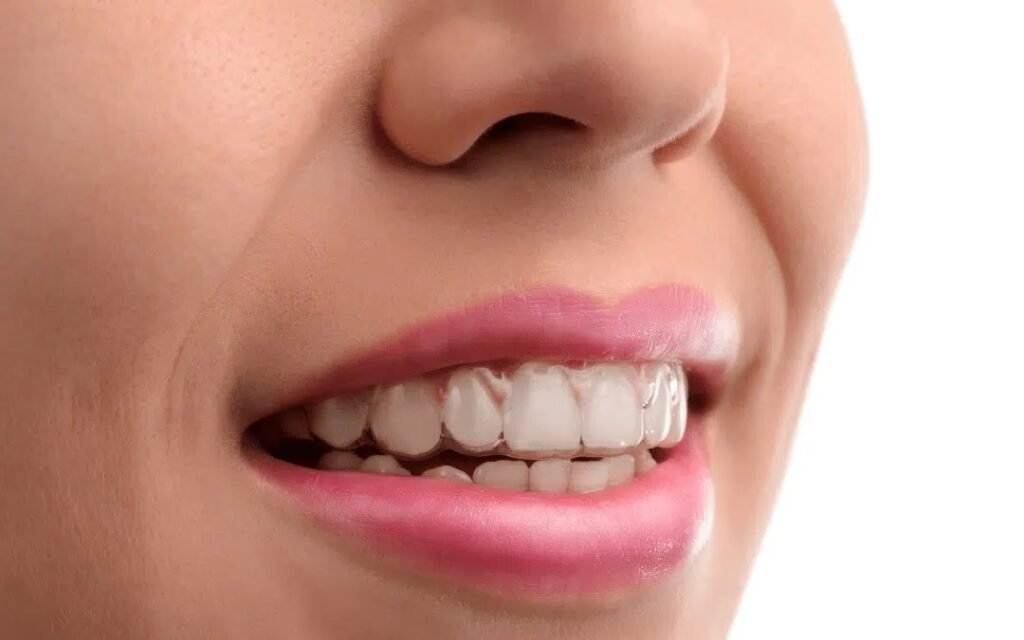
ceramic braces, also known as ceramic braces, operate similarly to traditional metal braces but with one key difference: they use clear or tooth-colored brackets. These braces are bonded to the teeth and connected by wires, which are periodically tightened to shift teeth into the desired position. The primary advantage of invisible braces is their aesthetic appeal, as they are less noticeable than metal braces but equally effective in treating complex dental issues. However, they can be more prone to staining and may require rigorous oral hygiene.
In contrast, Invisalign employs a series of custom-made, clear plastic aligners to gradually move teeth. Patients receive a new set of aligners every one to two weeks. The aligners are removable, which makes eating, brushing, and flossing more convenient. Invisalign is particularly appealing to those seeking a virtually invisible treatment option. It’s also a less invasive choice for those who prefer not to have fixed brackets and wires. However, Invisalign may not be suitable for addressing more severe orthodontic issues, and its effectiveness heavily relies on patient compliance, as the aligners must be worn for 20-22 hours daily.
When considering cost, both ceramic braces and Invisalign can be more expensive than traditional metal braces. invisible braces might incur additional costs due to the materials used and potential staining issues, while Invisalign’s pricing reflects the custom manufacturing and frequent aligner changes. Insurance coverage and payment plans can vary, so consulting with your orthodontist is crucial for an accurate cost comparison.
Ultimately, the choice between ceramic braces and Invisalign depends on individual needs, lifestyle, and orthodontic requirements. invisible braces may be better suited for those with complex dental issues who prioritize effectiveness and are willing to maintain diligent oral hygiene. Invisalign, on the other hand, could be the ideal solution for those seeking a discreet, flexible treatment option and are committed to wearing the aligners as recommended.
Conclusion: Making the Best Choice for Your Smile
Choosing between clear braces, metal braces, and Invisalign can be a challenging decision, given the unique benefits and limitations of each option. invisible braces, also known as ceramic braces, provide a less noticeable alternative to traditional metal braces, making them an attractive choice for those concerned about aesthetics. They utilize tooth-colored or clear brackets and are just as effective in correcting dental misalignments, although they may be slightly more fragile and often come at a higher cost.
Metal braces, on the other hand, remain a popular and reliable option. They are typically more durable and less expensive than ceramic braces. Metal braces are highly effective for a wide range of orthodontic issues, from minor adjustments to more complex cases. While they are more noticeable, some patients find reassurance in their robustness and proven track record.
Invisalign offers a modern, discreet approach to teeth straightening. Using a series of custom-made, clear aligners, Invisalign gradually shifts teeth into the desired position. This option is particularly appealing to those who seek virtually invisible treatment and the convenience of removable aligners. However, it may not be suitable for severe orthodontic issues and often requires strict compliance to achieve optimal results.
Ultimately, the best choice for your smile depends on your specific dental needs, lifestyle, and personal preferences. A consultation with an experienced orthodontist is crucial in making an informed decision. During the consultation, the orthodontist will assess your dental condition, discuss the pros and cons of each option, and recommend the most suitable treatment plan tailored to your goals.
Regardless of the type of braces you choose a commitment to maintaining good oral hygiene and adhering to the orthodontist’s instructions will ensure the best possible outcome. By weighing the benefits of ceramic braces, metal braces, and Invisalign, and seeking professional guidance, you can confidently embark on your journey to a healthier, more beautiful smile.
FAQs
-
Are Clear Braces Effective?
They are effective in treating a wide range of dental issues, such as misalignment, crowding, and gaps between teeth. The materials used in ceramic braces, often ceramic or clear plastic, provide similar results to their metal counterparts. However, the effectiveness of ceramic braces largely depends on the severity of the dental issue and the adherence to the orthodontist’s instructions.
-
Do Clear Braces Take Longer?
The treatment duration for ceramic braces can be slightly longer compared to metal braces. This is because the ceramic braces for 18 to 36 months, depending on the complexity of their dental issues. Regular follow-up appointments are essential to ensure that the treatment progresses as expected.
-
Are Clear Braces More Expensive?
Cost is another critical factor when considering ceramic braces. Generally, ceramic braces are more expensive than traditional metal braces. The higher cost is attributed to the materials used and the customized nature of the treatment. Prices can vary significantly based on the orthodontist’s expertise, the location of the practice, and the length of treatment. Patients should consult with their orthodontist to get a detailed cost estimate and explore potential payment plans or insurance coverage options.
-
What Are the Disadvantages of Clear Braces?
While ceramic braces offer several advantages, they also come with certain disadvantages. Aside from the higher cost and longer treatment time, ceramic braces are more prone to staining, especially if the patient consumes foods and beverages like coffee, tea, or wine. Additionally, ceramic braces are generally larger and can cause discomfort or irritation to the gums and lips. Patients must maintain excellent oral hygiene to avoid staining and ensure the braces remain as discreet as possible. Lastly, ceramic braces might not be suitable for individuals with severe dental issues, necessitating a consultation with an orthodontist to determine the best treatment option.


